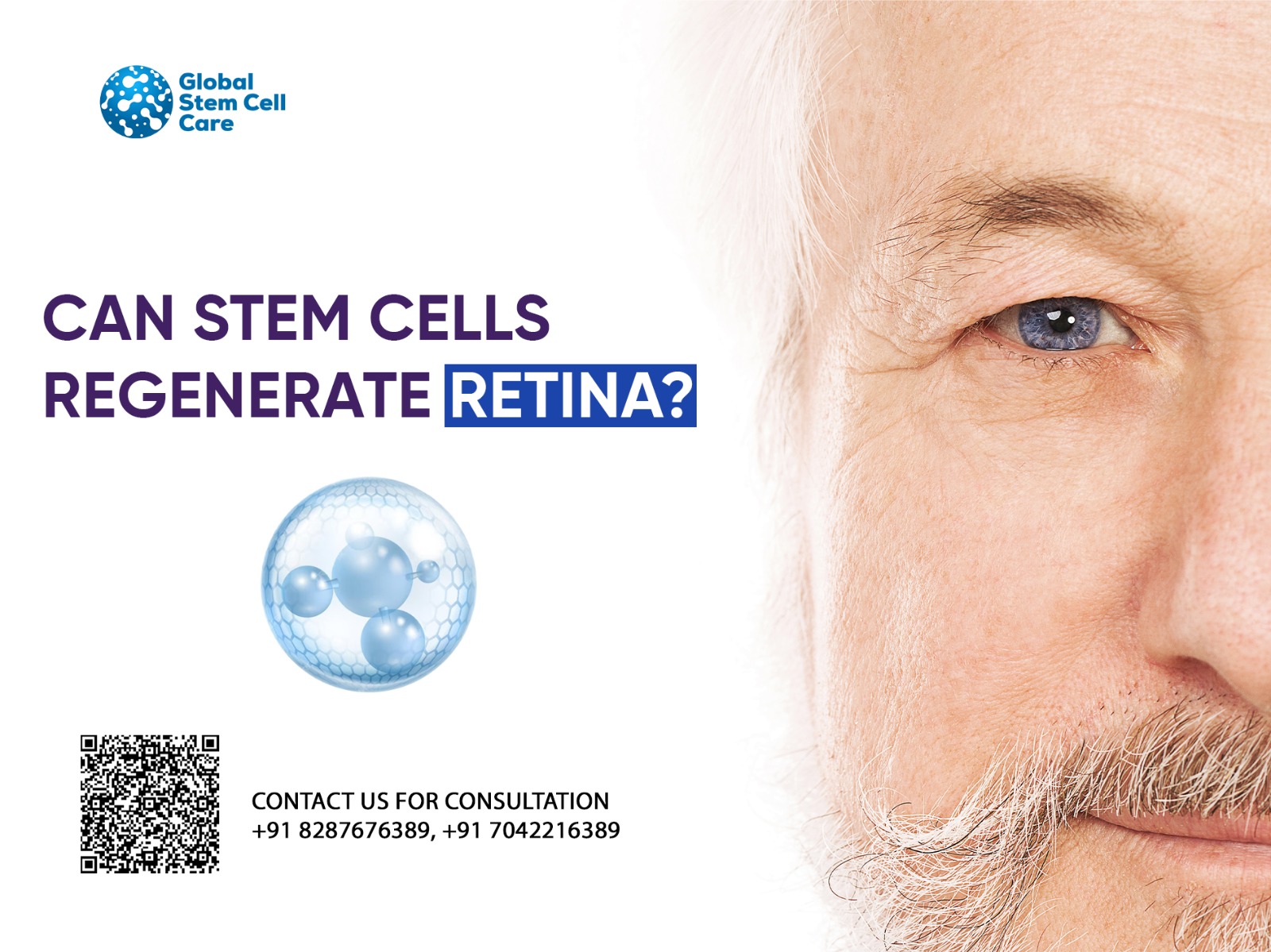This is another very exciting frontier in medical science regeneration of the retina through stem cells. There could be hope for patients who have vision impairments caused by retinal diseases because stem cell therapies can repair and replace damaged retinal cells. It could revolutionize treatment, restoring sight for millions who suffer from conditions like macular degeneration and retinitis pigmentosa.
What is the Retina?
The retina is a thin, sensitive tissue at the posterior wall of the eye and constitutes the most essential role of vision. The part acts to catch the light and then gives its signal to the optic nerve in the brain for sight. Damage to it would therefore result in partial to full vision loss.
Causes of Retina Damage
Some factors can damage the retina. They include:
Retinopathy: A condition frequently resulting from diabetes, leading to the formation of broken-down blood vessels in the retina.
AMD (Age-Related Macular Degeneration): A most common cause of vision impairment among the elderly.
Retinal Detachment: The normal position of the retina is pulled, resulting in impaired vision.
Injuries and Trauma: Direct injuries to the eyes damage the retina.
Optic Nerve Damage: Glaucoma and other conditions can damage the optic nerve so that signals are not transmitted to the brain.
Genetic Disorders: Inherited diseases, such as retinitis pigmentosa, can cause progressive vision loss.
Stem Cell Therapies for Retina Regeneration
Through the repair of damaged retinal cells, stem cells offer hope for vision restoration, which transforms treatments for conditions like macular degeneration. It may help patients regain sight and improve their lives.
Different types of stem cells are being researched to make such outcomes possible.
- Pluripotent Stem Cells: They can be developed into any type of cell, even retinal cells. The induced pluripotent stem cells are obtained from adult cells and are very versatile.
- Mesenchymal Stem Cells: They may be present in the bone marrow and fat and hence have regenerative ability to support retina repair.
These types of stem cells have a lot of potential and can be used to produce effective treatments for retinal diseases.
How Does Stem Cell Therapy Work for the Retina?
Harvesting and Cultivation: Visualize scientists being meticulous while harvesting stem cells from a donor. These are taken care of and cultured in the laboratory, like a garden, to be sure that they are healthy and ready for use.
Transplantation: The prepared stem cells are gently transplanted into the damaged retina. The process is so fine-tuned that it should position them exactly where they need to be most.
Differentiation and Repair: When in their new habitat, the stem cells differentiate into retinal cells by working very hard to repair damaged tissue to recover partial vision.
Optic Nerve Regeneration: Another potential benefit is optic nerve regeneration, by which the optic nerve transmitting visual information from the eye to the brain can be restored; this could be helpful in various conditions such as glaucoma and other optic nerve problems.
Benefits of Stem Cell Treatment for Retinal Disorders
Some advantages of stem cell therapy for retinal disorders include:
Possibility of Vision Repair: These stem cells could develop into retinal cells; thus, the tissue damaged by disease can be restored and the patient may regain his/her eyesight.
Specific Therapy: This kind of treatment will target the main source of retinal disorders and therefore may be more permanent compared to the regular therapies.
Anti-Inflammatory Effects: They have anti-inflammatory properties to reduce inflammation and are thereby helpful in healing the retina.
Quality of Life Improves: The treatment from stem cells will immensely increase the quality of life by restoring vision in retinal diseases.
Final Thoughts
It’s a new promise for retinal damage, retinopathy, and optic nerve problems in individuals. Such advanced research and professional services like Global Stem Cell Care are actually making the fantasy of regeneration of the retina and returning vision come true. If you are considering your or your dear one’s stem cell transplant options, take advice from professionals who would work out a well-suited solution for quality life improvement.
